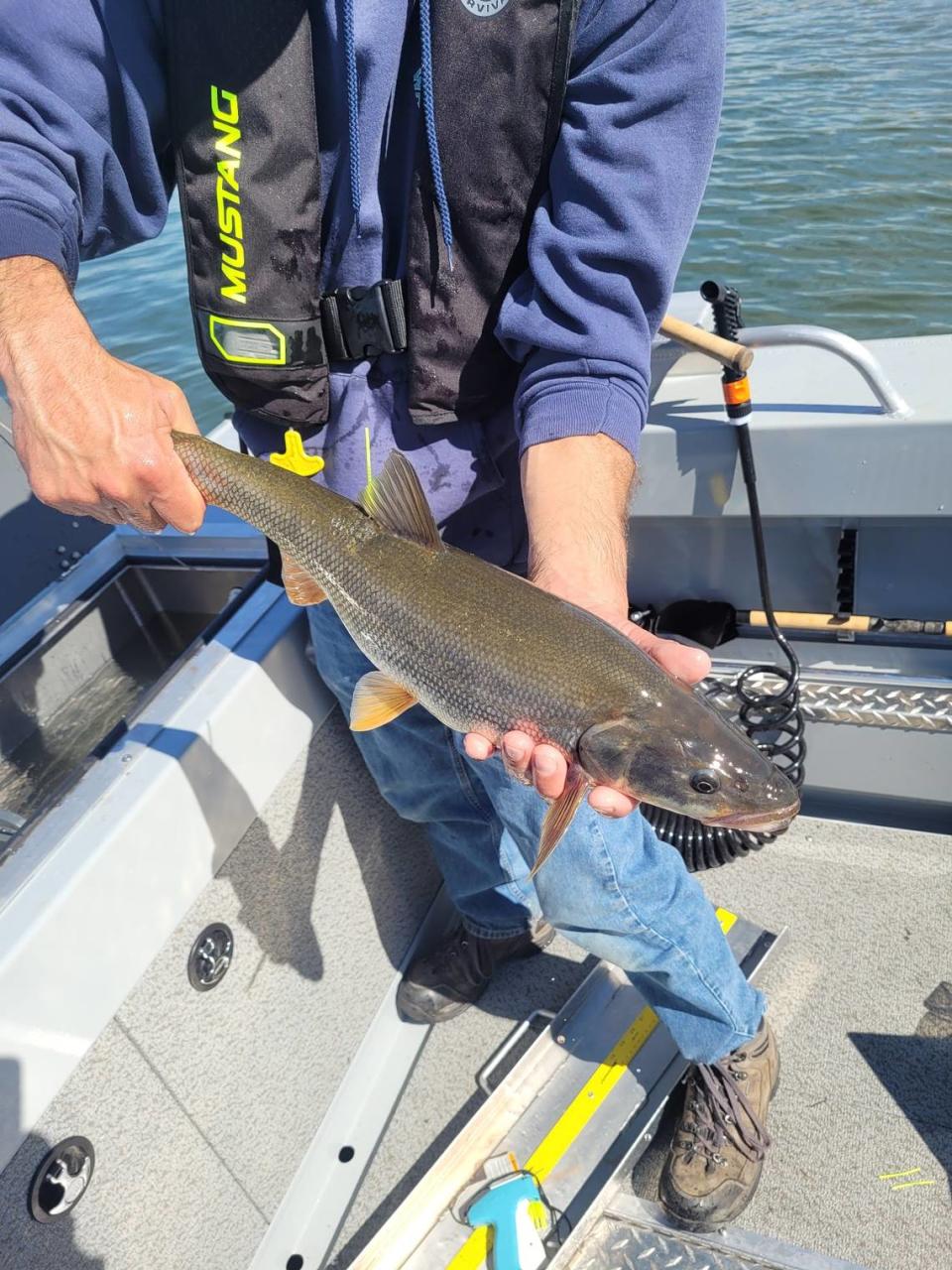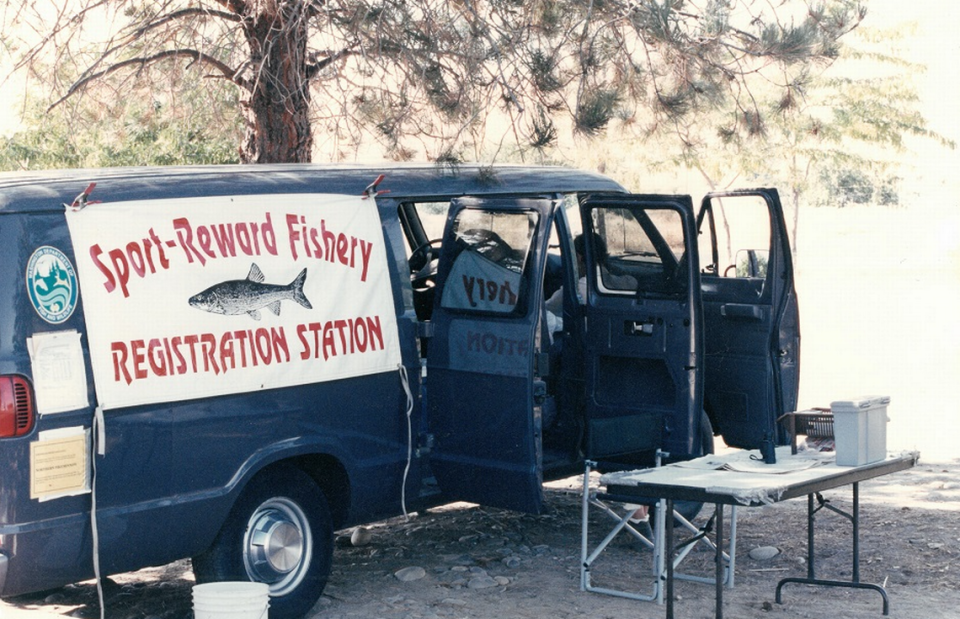Do you fish on the Columbia or Snake Rivers? Earn cash by catching this salmon predator
Rising concerns regarding the health of salmon populations in the Pacific Northwest have led to numerous programs and efforts to conserve the species. One of the simplest approaches to address the ongoing risks salmon face involves offering financial incentives to regional anglers to fish for a predator: the Northern pikeminnow.
Northern pikeminnow, commonly known as Columbia River dace, eat millions of juvenile salmon and steelhead every year in the Columbia and Snake River systems, according to the Washington State Department of Fish and Wildlife.
By incentivizing anglers to catch the predatory species that poses a threat to salmon survival without impacting the ecosystem on a grand scale, fish and wildlife agencies in Washington and Oregon can offer local anglers an opportunity to get paid while making a difference.
This is the logic behind the Northern Pikeminnow Sport Reward Program, a joint effort of the Oregon and Washington Departments of Fish and Wildlife, the Bonneville Power Administration and the Pacific States Marine Fisheries Commission. It rewards anglers in designated areas who catch sizable Northern pikeminnow, as the larger fish tend to eat a large amount of young salmon.

Why catch Northern pikeminnows?
The larger-sized Northern pikeminnows eat the most of the juvenile salmon and steelhead, so the reward program focuses on catching pikeminnows that are at least nine inches long.
The goal of the program is to reduce the average pikeminnow size by removing 10-20% of the large fish in their population, according to the program website. This decreases the threat to salmon and steelhead populations without eradicating the pikeminnow’s presence.
The more you catch, the more money you make. The first 25 pikeminnows are worth $6 each, the next 175 worth $8 and every fish after is worth $10. But if you catch a specially-tagged Northern pikeminnow, you can earn $500.

The program is in effect each year, typically from May through September, like this year. Designated areas of the Snake and Columbia Rivers will be marked, but the general boundaries are:
Columbia River: From the mouth to Priest Rapids Dam, upstream of Tri-Cities
Snake River: From the mouth to Hell’s Canyon Dam
What is a Northern pikeminnow?
The fish is a large minnow native to the Pacific slope.
Northern pikeminnows are described as having a large snout and mouth, which extends back to the eye. Its body will be a dark or dusky green, with a silvery or creamy white tummy, according to the Pikeminnow Program website. The fish dons clear fins and looks similar to a walleye, without the signature teeth and spiny fin rays.

Pikeminnows are opportunistic feeders, but the larger fish are more “highly piscivorous,” meaning they eat a lot of other fish.
Since the program’s creation, over 5.2 million Northern pikeminnows have been removed, resulting in a 40% predatory decrease, according to the site. On average, the top 20 catchers between 2011 and 2020 caught an average of 3,353 fish.
How to catch pikeminnows
You can catch a Northern Pikeminnow just about anywhere on the Columbia River. They tend to congregate in rocky areas with a fast current, like near dams, islands, stream mouths and river bars.
In general, most Northern pikeminnows are caught in water between seven and 25 feet deep. If you can’t find any within an hour, try moving upstream or downstream.
Your best shot for finding the fish is during low-light conditions, sunrise, sunset or overnight. There is a recorded higher concentration of the fish in shallow water during these times.
Because the fish are opportunistic feeders, anglers have multiple baiting options, including standard bait or tackle, plastic grubs and lures.

Get money from Pikeminnow program
Here’s how the program works. If all guidelines are followed, you’ll receive vouchers for Northern pikeminnows caught. The vouchers are sent in, then paid out.
Stop by the Registration Station before fishing in designated Pikeminnow Program areas. You must register in order to receive any payment for fish caught. You’ll have to register for each day you want to fish, and you can only be registered in one area at a time.
Turn in any Northern pikeminnows caught to the area’s station during hours of operation. Fish must be fresh, in good condition and caught the same day as the one stamped on your registration form. Forms are available after hours in a nightbox, date-stamped for anglers who want to fish and submit their catch the next day.
If the fish qualifies, you’ll receive a voucher. Complete and sign the voucher, then mail it to the listed reward payment address. Pre-addressed envelopes are available. Mail this in so it is received before November 15, any vouchers received after will not be accepted. If you’re a first-time participant, include an IRS form W-9 with your first voucher.
If you caught a pikeminnow with an external spaghetti tag, you will receive a special tag voucher. All aforementioned guidelines still apply, with additional steps. Send the external tag with the voucher to the printed address, so the tag can be authenticated.
Get paid and fish again.

